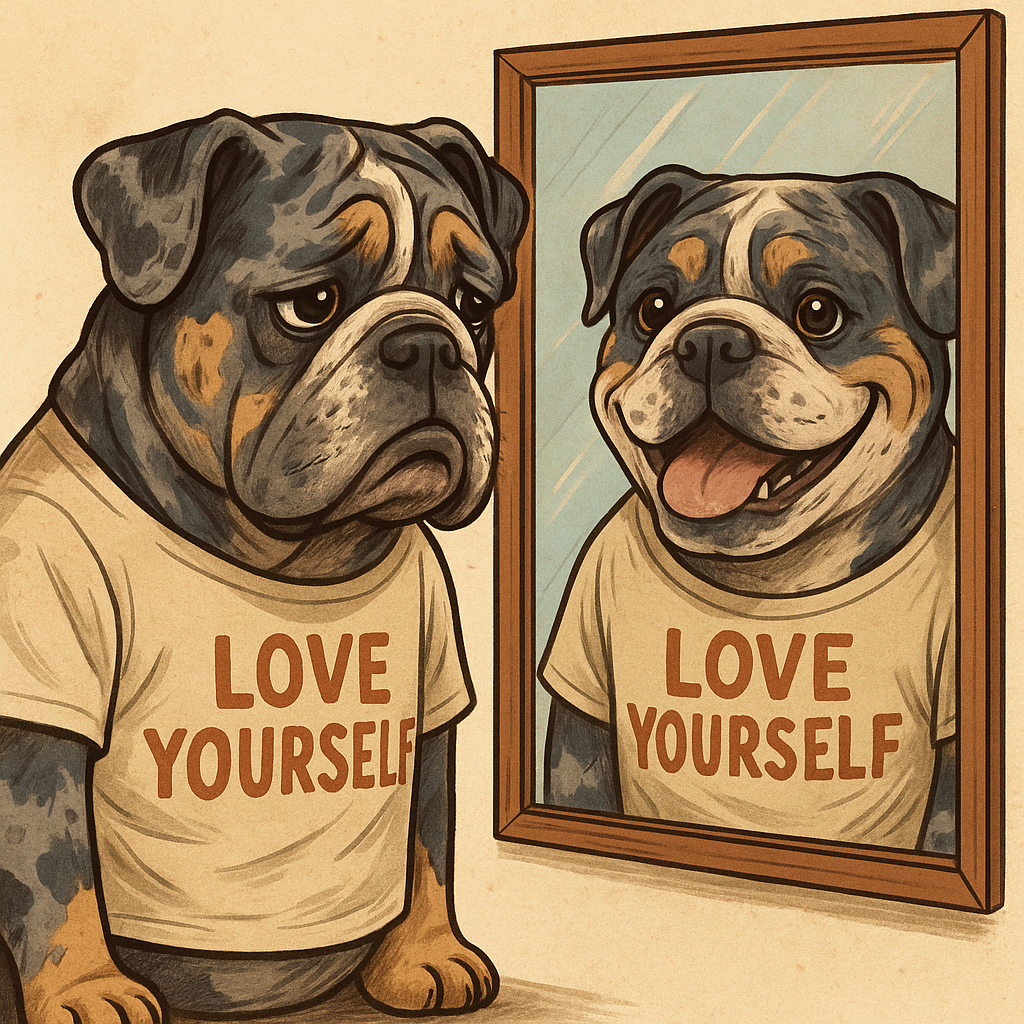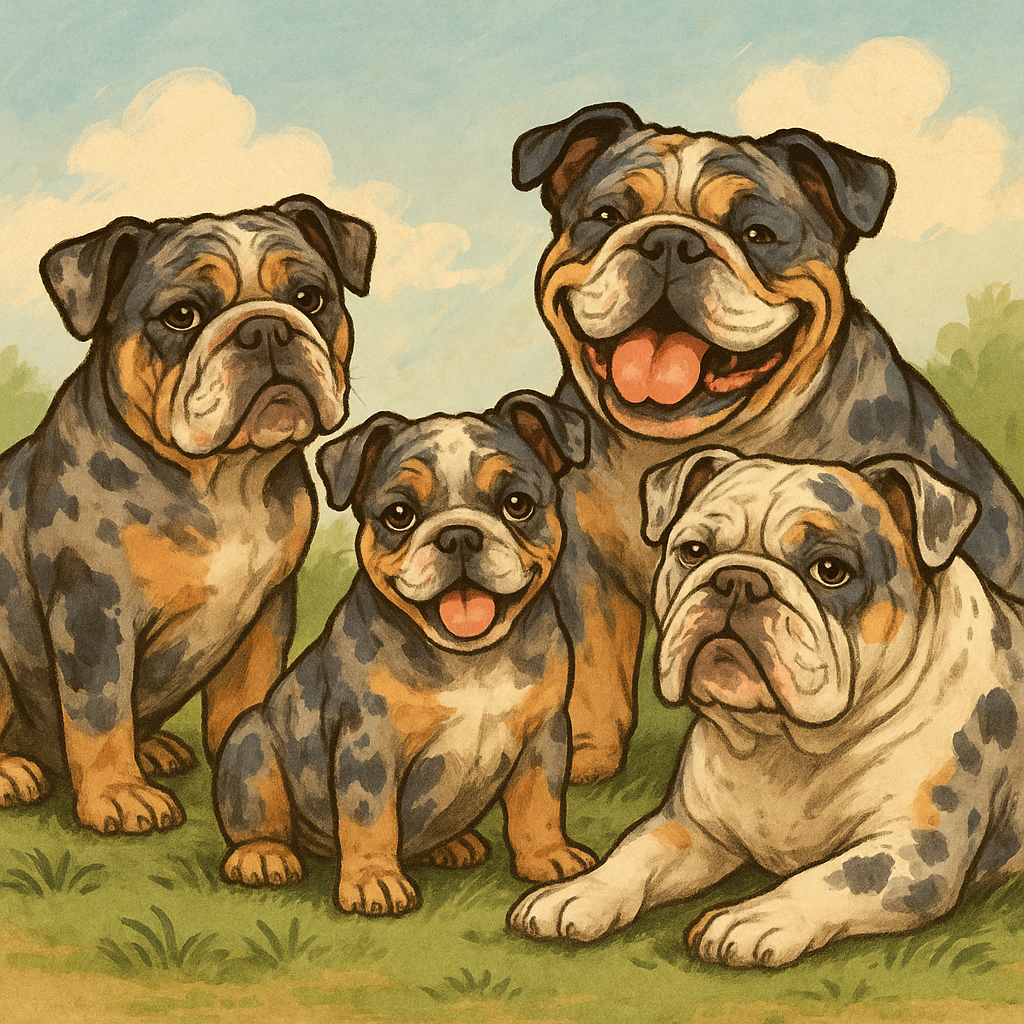Understanding the Merle Coat in English Bulldogs: Facts, Myths and DNA

Merle English Bulldogs are eye-catching, bold, and undeniably beautiful. Their coats are marbled with patches of diluted color, often paired with striking blue or mismatched eyes. But with their unique looks comes a lot of misinformation—and a fair amount of controversy. Let’s break down the facts and answer some of the most common questions we receive about the merle coat in Bulldogs.
Can the Merle Gene Occur Naturally in English Bulldogs?
No. The merle gene is not naturally occurring in the traditional English Bulldog breed standard. This pattern is the result of introducing the merle gene through outcrossing—usually with other bully breeds like French Bulldogs or American Bulldogs. Over time, breeders have selectively bred back to English Bulldogs to produce merle dogs that meet the physical and temperament traits of the breed.
If the Merle Gene Isn’t Natural, How Can a Dog Be 100% English Bulldog by DNA?
Great question—and one that confuses a lot of people.
DNA breed identification panels (like Embark or Wisdom Panel) look at breed-informative genetic markers, not coat color genes like merle. If a merle dog has enough of the breed markers associated with English Bulldogs, it can still return as “100% English Bulldog,” especially after several generations of breeding back into the line.
So yes, it’s entirely possible for a dog to genetically test as 100% English Bulldog while still carrying the merle gene—because the test is looking at breed lineage, not color mutations.
Do Merle English Bulldogs Have More Health Issues?
This is where things get tricky.
Merle itself is not inherently dangerous in single-dose (heterozygous) form. However, breeding two merle dogs together is where things go seriously wrong. This is known as a double merle breeding, and it significantly increases the risk of serious health defects, especially involving vision and hearing.
Double merle puppies can be born blind, deaf, or with severely underdeveloped eyes (a condition called microphthalmia), among other serious issues. For this reason, ethical breeders never breed merle to merle.
When bred responsibly—only pairing a merle to a non-merle—merle Bulldogs can be just as healthy as their standard-colored siblings. But it’s crucial to understand the genetics and breed responsibly to avoid catastrophic outcomes.
What Should Buyers Know Before Getting a Merle English Bulldog?
- Ask for DNA Testing – Make sure the breeder has done full DNA testing, including coat color and genetic health panels.
- Verify Parent Pairing – A reputable breeder will be transparent and never pair two merles together.
- Avoid Backyard Breeders – If the price seems too good to be true, or the breeder won’t show documentation, walk away.
- Understand Breed Standards – Merle is not recognized by the AKC for conformation showing, but they can still be registered as purebred pets.
So, Are Merle Bulldogs "Bad"?
Not at all—but they do require educated, ethical breeding practices and informed buyers. The merle coat is striking, rare, and can be perfectly healthy if the breeder knows what they’re doing and prioritizes the well-being of the dogs.
At House of Payne English Bulldogs, we believe transparency is everything. We do full DNA testing, including coat color and genetic health, and we never breed merle to merle. Our goal is always health first—because a beautiful coat means nothing without a healthy, happy Bulldog underneath.
Want to learn more about our breeding program or upcoming litters?
Visit
payneenglishbulldogs.com or follow us on Instagram for behind-the-scenes puppy updates.






